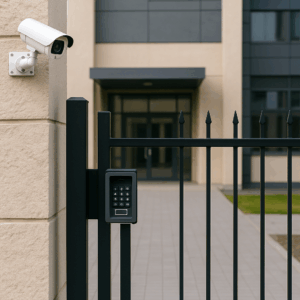Extensive experience and proven track record in conducting thorough facility security assessment around the globe.
We believe in clear communication and collaboration, making our experts approachable and accessible to help you understand the complexities of your security landscape and provide the appropriate facility security assessment.
Our detailed facility security assessment covers every aspect of your security, from physical security and digital vulnerabilities to procedural weaknesses, ensuring no stone is left unturned.
Red Team
Red Team
We employ the tools of tradecraft and covert entry methods that are usually reserved for sophisticated nation state attackers. We will throw everything that we have at you, and push every aspect of your facility security assessment program to its breaking point.
Red Team
Overview
Challenging your comprehensive security by simulating real-world threats that target both your physical and digital defenses, revealing critical vulnerabilities.
Discovering the hidden gaps, understand your weakness, and uncover blind spots within your comprehensive security program to strengthen your defenses.
Upon completion, you receive a detailed facility security assessment report that clearly identifies areas for improvement, providing actionable insights to enhance your security posture.
explore bespoke security solutions.
Employ exhaustive research and surveillance, targeting the most guarded assets of your organization. From military installations to the residences of ultra-high-net-worth individuals, our facility security assessment will leave no stone left unturned. The objective? To replicate the tactics of adversaries and identify every potential breach point.
Ideal For
Military
Government
Defense Facilities
Harbors
Ports
Corporate HQs
Municipal Buildings
Commercial Offices
Sports Stadiums
Music Venues
Manufacturing Plants
Telecommunications
Tactics & Techniques
- Electronic system breaches
- Card cloning, credential skimming
- Social engineering, false credentials
- OSINT analyses, digital foot-printing
- Radio signal, Wi-fi, and Bluetooth hacks
- Malicious digital implants and payloads
- Maritime infiltration
- Lock picking, key imprinting, door bypass
Broad Spectrum Facility Security Assessment & Solutions
Broad Spectrum Facility Security assessment & Solutions
A facility security assessment by Active Crisis Consulting covers a comprehensive range of settings.
Corporate Companies and Facilities
Ensuring robust facility security assessment & protocols to protect business operations and assets.
Stadiums and Arenas
Evaluating and enhancing security measures for large scale public events.
Banks and Jewelry Stores
Implementing stringent security to safeguard valuable assets and sensitive information.
Residential Houses for High-Profile Individuals
Providing personalized facility security assessment to protect high-profile clients' residences.
Facility Security Assessment FAQs
A Facility Security Assessment evaluates vulnerabilities and implements strategies to address potential threats to individuals, facilities, or assets.
Security consultants analyze risks, design protective strategies, and implement solutions for corporate, physical, and facility security.
Corporate security covers protecting staff, facilities, intellectual property, and mitigating cyber and physical threats.
Physical security consulting assesses and enhances systems to prevent unauthorized access, theft, or harm.
Building security improvements include access controls, surveillance systems, and physical barriers to protect premises.
Comprehensive security involves integrating physical, corporate, and facility strategies to ensure robust protection.
Security training prepares individuals and teams to handle threats, including armed security and physical security challenges.
A Facility security assessment evaluates vulnerabilities in infrastructure, access control, and operational protocols.
Event security ensures the safety of attendees and staff by addressing crowd control, access points, and on-site risks.
Armed security provides an additional layer of protection in high-risk environments or during significant threats.
Facility Security Assessment consulting involves expert advice on risk assessments, physical security measures, and long-term strategies.
Industries such as corporate offices, retail, healthcare, and events benefit from tailored Facility Security Assessment.
Corporate security safeguards assets, reduces liability, and ensures business continuity during potential threats.
The first step involves identifying potential threats, vulnerabilities, and the impact of risks on your environment.
Physical security safeguards people, property, and infrastructure from theft, intrusion, or harm.
Security training teaches risk recognition, emergency protocols, and situational awareness to improve preparedness.
Armed security includes trained personnel equipped to respond to high-risk situations, ensuring maximum safety.
Facility security uses surveillance, access control, and response plans to minimize risks to operations and personnel.
Large-scale gatherings, corporate meetings, concerts, and public events often require tailored security solutions.
Building security prevents unauthorized access, ensuring the safety of occupants and protecting assets.



